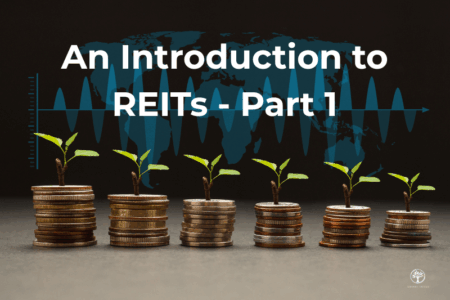Both CapitaLand Integrated Commercial Trust and Frasers Logistics & Commercial Trust are blue-chip real estate investment trusts (REITs) in Singapore’s market.
Investors might wonder though, how the two compare against each other.
We will examine which is the better buy today.
CapitaLand Integrated Commercial Trust (CICT): Stable Domestic Presence
CapitaLand Integrated Commercial Trust (SGX: C38U), or CICT, is Singapore’s largest REIT. It has a portfolio that focuses on prime retail, office, and integrated developments in Singapore. It also has two properties in Germany and three in Australia.
In the first half of 2025 (1H2025), CICT gave an encouraging update.
Even though net property income (NPI) was down 0.4% year-on-year (YoY) to S$579.9 million, distributable income grew 12.4%.
Ultimately, the REIT’s distribution per unit (DPU) was up 3.5% year-on-year (YoY) to S$0.0562, reflecting continued growth since COVID.
CICT’s overall occupancy rate was steady at 96.3% in the first half of 2025. CICT also reported positive rental reversion of 7.7% for its retail properties and 4.8% for its office properties.
This shows the REIT’s ability to raise rents.
CICT ended the first half of 2025 with a low aggregate leverage ratio of 37.9%.
The REIT’s cost of debt was also lowered slightly from 3.6% at the end of 2024 to 3.4%.
If CICT can continue lowering its cost of debt, such as by refinancing at lower interest rates, it could boost the REIT’s distributable income.
The REIT’s fortune is tied to Singapore’s consumer spending, given 37.7% of its total NPI comes from retail malls.
In the first half of 2025, organic shopper traffic growth was 3.4% YoY.
CICT is also focused on enhancing its existing properties; the REIT recently refurbished Gallileo (an office building) in Germany and IMM Building (a retail mall) in Singapore.
A risk to monitor would include the cyclical nature of retail: An economic downturn could reduce shopper traffic for its retail malls, leading to a decline in its NPI.
Another risk would be higher interest rates, which would lead to higher cost of debt for CICT, thus reducing its DPU.
Frasers Logistics & Commercial Trust (FLCT): Global Logistics Exposure
Frasers Logistics & Commercial Trust (SGX: BUOU), or FLCT, is a REIT that focuses on logistics and industrial properties.
Nearly half of its properties, by asset value, are in Australia, with the rest in Germany, Singapore, the United Kingdom, and the Netherlands.
FLCT recently declared a DPU of S$0.03 per share for the first half of its fiscal year 2025 (1H FY25), down 13.8% YoY.
This represents a continuous decline in DPU since FY21.
In its earnings update for 3Q FY25, the REIT reported an occupancy rate of 92.5%.
Impressively, FLCT announced a positive rental reversion of 43.3%; in the first nine months of FY25, FLCT’s rental reversion was up 30.7%, highlighting a possible rental upcycle.
FLCT has a low aggregate leverage of 36.8%, and an average cost of debt of just 3.1%.
The REIT has 67.3% of its total debt of S$2.5 billion on fixed rates, thus providing a buffer against any possible rise in interest rates.
FLCT is exposed to secular growth trends such as e-commerce demand.
As more shopping shifts online, logistics properties could see an increase in demand to ensure consumers receive their online shopping packages.
FLCT’s logistics portfolio has an average weighted lease tenure of 4.6 years, which provides stable rental income for the REIT.
Because FLCT has large international exposure (87.5% of its assets are located outside of Singapore), it is exposed to foreign exchange (FX) risk as well as foreign economic cycles.
Head-to-Head Comparison: CICT vs FLCT
Let’s compare the REITs to see which is a better buy.
CICT has a decent trailing dividend yield of 4.7% at its share price of S$2.38.
The REIT’s DPU appears sustainable given its low gearing and its diversified portfolio of properties.
FLCT’s trailing dividend yield is 6.3% at its share price of S$0.96.
Although the REIT enjoys tailwinds from ecommerce, its DPU looks less sustainable because of exposure to FX risks and overseas economic cycles.
CICT’s diversified portfolio of retail, office, and integrated developments has proved to be more resilient compared to FLCT’s logistics-focused portfolio.
Both REITs are sensitive to interest rates; lower interest rates should benefit both, whereas higher rates are likely to hurt their DPUs.
Some important things to monitor for the REITs are the level of physical shopping for CICT and the growth in global logistics for FLCT.
Get Smart: Should Investors Buy CICT or FLCT?
The question of why a particular REIT is a better buy comes down to what an investor is looking for.
Investors looking for a domestic-focused, stable REIT may find CICT to be the better option.
Investors seeking global diversification with a logistics focus may see FLCT as the more compelling option.
How do rich Singaporeans invest when volatility hits?
They turn to companies with cash, history, and discipline. This free report highlights 5 blue chips that deserve your attention. Get your copy here and see who made the list.
Follow us on Facebook, Instagram and Telegram for the latest investing news and analyses!
Disclosure: Wesley does not own any of the companies mentioned in this article.





